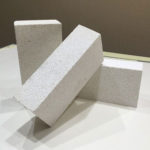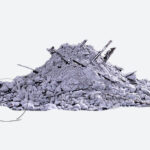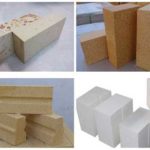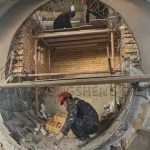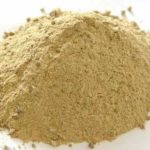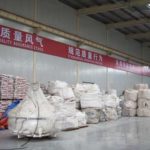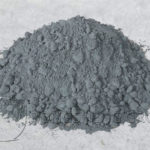LF ladle furnace is a refining equipment using electric arc heating technology. LF furnace is heated by a field submerged arc with 3 electrodes. On the one hand, high basicity reducing slag is produced by electrode heating, and on the other hand, deoxidation, desulfurization, and adjustment of molten steel composition are performed. LF furnace has the characteristics of low investment, simple equipment, reasonable combination of refining technology, flexible smelting process, and uniform temperature. It usually works with a high-power electric furnace and continuous casting. Rongsheng Refractory Material Manufacturer can provide high-quality refractory lining materials for the LF ladle refining furnace. Contact Rongsheng for the free detailed information and quotation.
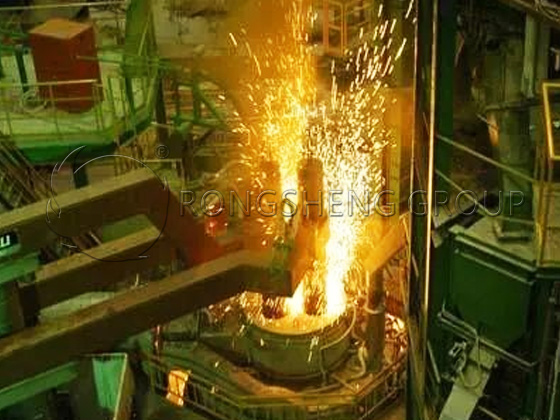
LF Ladle Refining Furnace
LF device is also called ladle refining furnace. This method was developed by Japan in 1971. The reduction refining process of the electric arc furnace is transferred to the ladle refining device with heating refining function, and the influence of the melting oxidation refining process of the electric arc furnace on the reduction refining process is minimized to ensure the reduction refining effect of the device.
The LF refining furnace consists of an electrode heating system, an alloy and slag feeding system, a bottom air permeable brick argon blowing stirring system, a temperature measurement sampling system, a wire feeding system, a furnace cover cooling system, a dust removal system, and a control system. The parts that need to use refractory materials are: LF refining furnace top (furnace cover), refining ladle, bottom air blowing permeable bricks, and tundish slides, etc.
Commonly Used Refractory Materials for LF Furnaces
The commonly used refractory materials for LF furnaces are divided into slag line, furnace wall, furnace cover and ladle bottom. The slag line is severely damaged by the erosion of high-alkalinity slag, and magnesia-carbon bricks with good thermal shock resistance are often used. The LF furnace has serious slag penetration, which is easy to cause structural spalling. The traditional high-alumina bricks can no longer meet the requirements, and materials with added carbon and MgO are needed to overcome it. The refining ladle lining has also developed from fixed shape to amorphous shape. The furnace cover is basically made of castables, and the furnace bottom is made of large cast large bricks or dry ramming materials.
Refractory materials for the slag line area
Since the LF furnace slag line area is in a high-alkalinity slag and high-stress environment, the slag line area is more susceptible to damage. Therefore, the refractory bricks in this area are generally selected from magnesia carbon bricks, magnesia calcium carbon bricks, and fused and combined magnesia chrome bricks.
Refractory materials for cladding
High-alumina products were used in the cladding area in the early days. Due to severe erosion and deterioration of service conditions, it is often necessary to add a small amount of magnesia sand or synthetic magnesia aluminum spinel and other materials to the material to improve the corrosion resistance and high-temperature shrinkage of high-alumina products. At present, the refractory materials in the lining area have developed from shaped products to amorphous products, and the materials include high-alumina bricks, magnesia aluminum carbon, aluminum magnesium carbon, and unburned magnesia calcium.

Refractory materials for the furnace cover
Since the furnace cover is eroded by molten steel and splashing slag, and affected by thermal shock during operation, the refractory materials in the furnace cover must have good high-temperature resistance, excellent thermal shock resistance, and spalling resistance. At present, the refractory materials used in the furnace cover are mainly high-alumina or corundum series castables. It is mostly made of fused corundum and special-grade bauxite as the main raw materials, pure calcium aluminate cement as the binder, silica fume, and activated alumina powder as additives. It is vibrated into shape and then baked at a low temperature.
Refractory materials for the bottom of the ladle and the air-permeable bricks
- ① The impact zone of the bottom of the ladle is mostly cast with high-aluminum-spinel castables into large bricks.
- ② High-calcium-magnesium dry ramming materials can be used for other parts.
- ③ The base bricks of the ladle are mostly made of ultra-low cement high-aluminum castables containing Cr₂O₃ and steel fiber.
- ④ The air-permeable bricks are straight-through, narrow-slit corundum or chrome corundum air-permeable bricks.
LF furnace repair material
- Flame gunning material: the material is mostly aluminum-chromium, alumina-spinel, and aluminum-zirconium.
- Semi-dry gunning material: the material is mostly magnesium oxide and aluminum silicon.
- Casting repair material: The material is mostly MgO-C castable.
For LF furnaces, brickwork is mostly used for slow turnover. Magnesium carbon bricks are used for slag line, and aluminum-magnesium carbon bricks or magnesium carbon bricks are used for other parts. The service life is mostly 50~80 times. The LF furnace lining with fast surrounding bricks is basically the same as that of the large ladle; that is, the slag line uses magnesia carbon bricks, and the bottom and molten pool use aluminum-magnesium castables. The service life of the slag line is mostly 60~100 times. Other parts are also about 150 times.
Leave Your Requirements on RS Kiln Refractory Bricks And Castable Materials! We Will Reply You In 12 Hours!:
